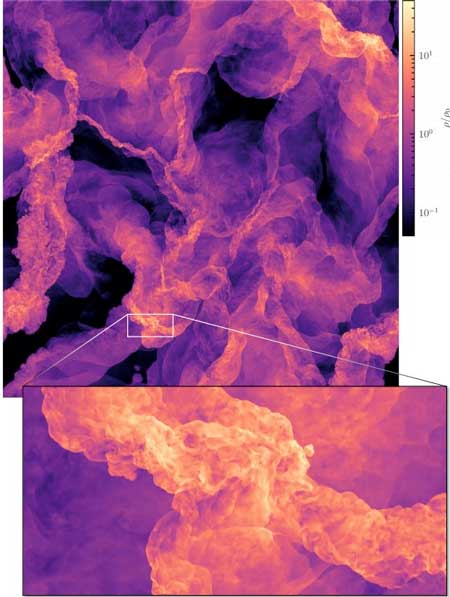| Jan 11, 2021 |
Unlocking the secrets of star formation
|
|
(Nanowerk News) A new study (Nature Astronomy, "The sonic scale of interstellar turbulence") by an international team of researchers has used computer power to map the so-called sonic scale, showing the key role turbulence plays in star formation.
|
|
According to lead researcher Associate Professor Christoph Federrath from The Australian National University (ANU), understanding how stars are formed is crucial to understanding more about how our own Sun and planets form.
|
 |
| The image shows a slice through the turbulent gas in the world’s highest-resolution simulation of turbulence published in Nature Astronomy. (Image: , Federrath et. al)
|
|
“Turbulence is a key ingredient for star formation.” Associate Professor Federrath said.
|
|
“It controls the pace of star formation, stirring up gas and slowing down the action of gravity, which – without turbulence – would make stars form a hundred times quicker than observed.”
|
|
“While the turbulence itself is supersonic – or faster than the speed of sound - star formation is actually very slow. And this is because of the turbulence slowing down star formation, such that only about one sun per year is formed in the whole of the Milky Way.
|
|
“On the other hand, turbulence also triggers the formation of stars on scales below the so-called ‘sonic scale’. Here we were able to measure the sonic scale in the biggest ever simulation of its kind.”
|
|
“Next we’d like to add magnetic fields, chemistry and cooling to a simulation of this size, in order to learn more about the processes taking place when stars form,” Associate Professor Federrath said.
|
|
“This will be extremely challenging, as it would take even more memory, space, and computing power. Such a simulation would just fit on Australia’s new supercomputer ‘Gadi’ at the National Computational Infrastructure.”
|
|
The research team included scientists from the University of Heidelberg and the Leibniz Supercomputing Centre (LRZ) of the Bavarian Academy of Sciences and Humanities in Germany.
|

